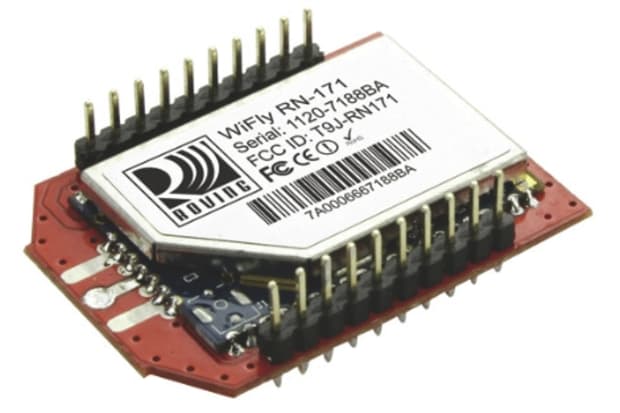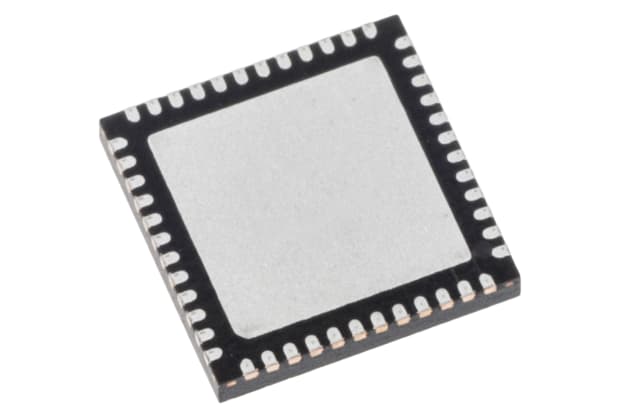- Published 15 Nov 2022
- Last Modified 17 Sept 2025
- 8 min
An Introductory Guide to Semiconductors
This guide introduces semiconductors, from the definition of a semiconductor to the usage of semiconductors in transistors, diodes, and LEDs.
Reviewed by Mithun Subbaroybhat, Technical Support Engineer (December 2022)
Semiconductors have revolutionised the electronics industry. They are key building blocks used in a wide range of applications to convert and amplify electronic signals. Semiconductors are present in virtually all electronic devices and circuits, as a fundamental component of modern electronics.
In this guide, we’ll take a closer look at what semiconductors are and how they’re used. We’ll also discuss their characteristics and showcase some common device types based on semiconductor materials.
What is a Semiconductor?
Semiconductors are key components used in the electronics industry. They conduct electricity under certain conditions but do not conduct it under others. Semiconductors are insulators that become conductors when their temperature is raised above a certain threshold. This means that they can control the flow of electrical current through them, making them uniquely useful components in many different types of electronics.
What is a Semiconductor Diode?
A semiconductor diode is a basic semiconductor component. It was the first semiconductor-based electronic device available.
In simple terms, a diode is a semiconductor that has a P-N junction connected to two electrical terminals. The P-N junction is an elementary building block used in most semiconductor devices, including diodes and transistors. It’s essentially a boundary or interface between two types of semiconductor material – P-type, and N-type – which are created by implanting impurities.
Semiconductor diodes feature asymmetric characteristics. They have high resistance to current flow in one direction and low resistance in the other direction. The non-linear current-voltage characteristics of semiconductor diodes can be further adapted using different materials and by adding impurities into these materials (a process referred to as doping) to enable them to perform different functions.
Why are Semiconductors Important?

The word semiconductor comes from semi (meaning half) and conductor. It refers to a material that has some, but not all, of the properties of an electrical conductor.
A semiconductor is somewhere between being an excellent conductor such as copper, and an excellent insulator such as glass or plastic. Therefore, it will sometimes conduct electricity, depending on electrical stimulation in a specific direction. As a result, it is a good material to be used as an electronic switch, either conducting or not conducting, thereby providing the 1s or 0s required in binary computing and digital processing-based systems.
Semiconductors are important because they can be constructed to conduct electricity better than other materials, a fact which makes them perfect for many applications.
What are Semiconductors Used for?
The most common function of a semiconductor diode is to allow an electric current to pass in one direction (forward) while blocking current in the opposite direction (reverse). They are commonly used in electrical circuits, such as in a diode bridge to rectify a signal to convert AC to DC.
In addition, semiconductor diodes can also be used to conduct electricity only if a certain threshold voltage is present in the forward direction (forward biased). The voltage drop across a forward-biased diode will vary only slightly with the current, affected by temperature. This effect means that a semiconductor diode can also be used as a temperature sensor.
How Do Semiconductors Work?

Semiconductors are materials that conduct electricity well enough to be used in transistors and other electronic devices, but not quite as well as metal. They’re made up of atoms with a mixture of positive and negative charges at their centre (called P-type and N-type semiconductors), and they conduct electricity when exposed to light or heat.
Semiconductor devices are activated when an electric current flows through them. This current causes electrons in their outer shells to flow freely between their atoms, creating an electric field around them. When two semiconductors meet with opposite charges, their electrons flow towards one another, creating a circuit between the two materials.
Semiconductor Materials
Strictly speaking, a semiconductor is not a component but a material that has a conductivity between that of conductors and insulators. Many forms naturally exist due to their chemical makeup.
Silicon (Si) is the dominant material used in the industry today, but other materials can be used such as germanium (Ge) or arsenide (GaAs). Semiconductors including silicon have unique electrical properties associated with their atomic structure.
When a semiconductor is composed of small crystals of crystalline compounds, it is referred to as a microcrystalline or amorphous semiconductor material. The above materials are all examples of amorphous semiconductors.
Semiconductor Packaging
Discrete semiconductors are supplied in packages which protect the semiconductor material. These packages are usually made from materials such as plastic, ceramic, glass, or metal. The package provides protection and holds the contact pins, leads or pads used to connect the device to external circuits. The packaging is also important in dissipating heat produced by the device.
There is a wide range of different semiconductor packaging types available, and the best option will depend largely on factors including size, power dissipation, and lead or pad count.
Semiconductor Categories
Semiconductor Device Types
Electronic components based on semiconductor technology include discrete components, such as MOSFETs or bipolar transistors. They can also include diodes such as light-emitting diodes (LEDs), and an ever-expanding range of integrated circuits (ICs). A range of different types of semiconductor diodes is available, including PIN, constant-current, TVS, Zener, Schottky, and various rectifier types.
Some of the most common semiconductor device types are explained in greater detail below.
PIN Diodes
A PIN diode is a type of semiconductor diode that has a wide and very lightly doped region in between the P-type and N-type regions. In contrast to standard P-N diodes, this makes PIN diodes suitable for use as a fast switch or attenuator in high-voltage electronics.
Key attributes for PIN diodes include:
- Diode configuration including single, dual, common cathode, or common anode
- Target applications including attenuators or switches
- Operational frequency ranges such as VHF, UHF, or SHF
- Forward conduction current (max)
- Forward and reverse voltage (max)
Laser Diodes
Semiconductor laser diodes work by converting electrical energy into light energy. In this process, photons are fired off in a beam that can be directed at an object or focused onto a surface to heat it. The laser diode produces a single wavelength of light (a narrow spectrum) which is ideal for applications like reading barcodes or scanning documents.
Crystal oscillators use laser diodes to generate a precise frequency for controlling timing circuits in computers and other devices. Laser diodes can also be used in conjunction with tunnel diodes to increase sensitivity, by increasing the amount of current that flows through them when they are hit with light photons.
Tunnel Diodes
Tunnel diodes are semiconductor devices which allow current to pass through them in one direction only while blocking current from flowing in the opposite direction. They are made from two layers of P-doped semiconductors with an insulating layer between them. This is called an intrinsic layer and is usually pure silicon oxide but could be made from other compounds.
Photocells
Photocells, also known as photoresistors, are semiconductor devices that change their resistance based on light intensity (photoconductivity). They absorb light and convert it into electrical energy. Photocells can be used in solar cells or for solar energy collection.
Solar Cells
Solar cells are another example of how a discrete semiconductor can be used to convert sunlight into electricity. They are made up of semiconductors and other components and work using the photoelectric effect.
Audio Circuits
Semiconductors can be used as amplifiers in audio circuits. The transistor amplifier is one of the most common types used for this purpose. Semiconductors are used as transistors in audio circuits because they can amplify small electrical signals into larger ones. This is achieved by controlling the flow of electrons between two points on a circuit board.
Gunn Diodes
Gunn diodes have a small gap between two regions where electrons can move freely without any resistance. This means that they have very high gain at low voltage levels, but low gain at high voltage levels. They are used in RF amplifiers and oscillators where gain must be large at low voltage levels, but small at high voltage levels.
IMPATT Diodes
Impact Ionisation Avalanche Transit Time (IMPATT) diodes are high-power semiconductor diodes with negative resistance. They are typically used as amplifiers and oscillators in high-frequency microwave electronic devices.
Integrated Circuits
Integrated circuits are multiple electronic circuits and functional elements (resistors, transistors, etc) on a single piece of semiconductor material. Unlike discrete semiconductor components, integrated circuits can include millions of transistors in large microprocessor chips, for example.
Discrete Semiconductors
Discrete semiconductors are discrete single crystals made from compounds like germanium or silicon. They have specific properties that make them useful for many different applications. Discrete semiconductor devices include:
Rectifier Diode
Rectifier diodes belong to a class of discrete semiconductors.
Photodiodes
Photodiodes (light sensors) are another type of discrete semiconductor.
Transistors
Transistors (amplifiers) are a third type of discrete semiconductor.


